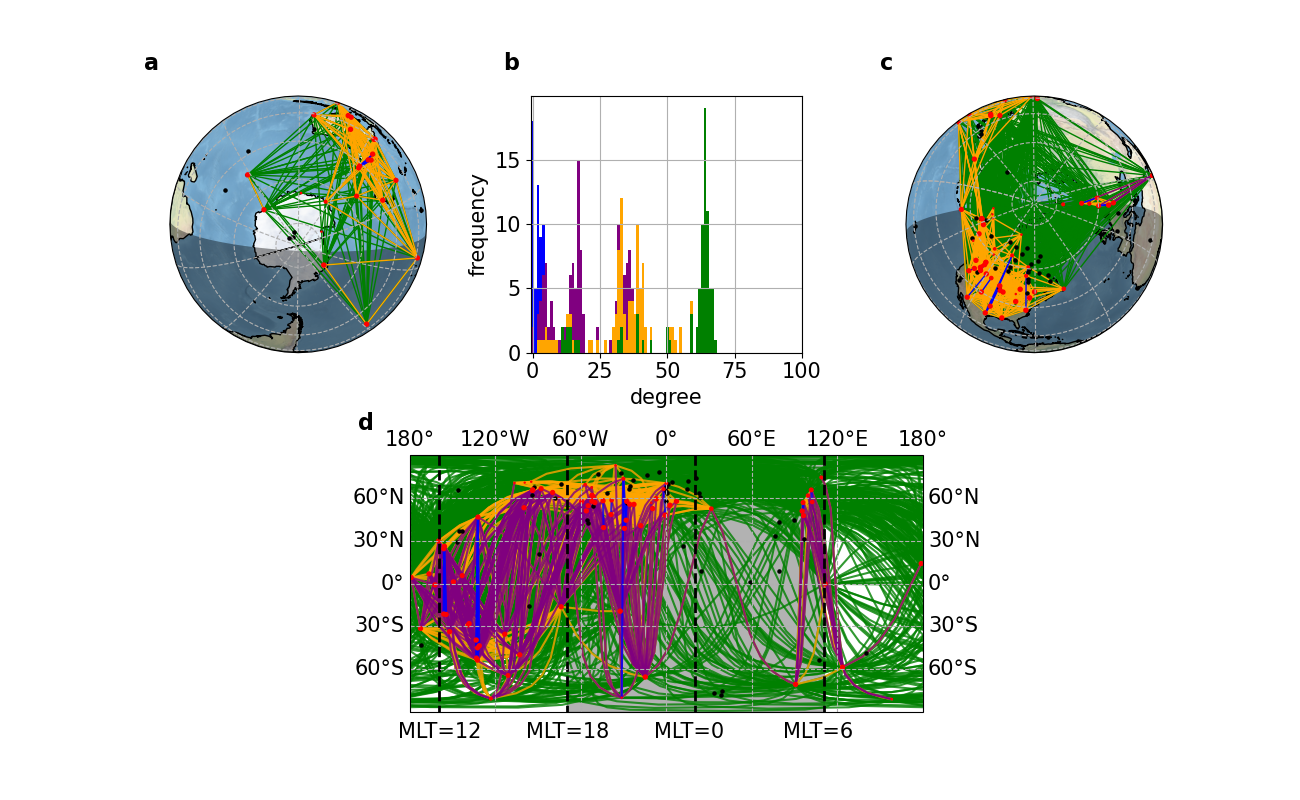MIST
Magnetosphere, Ionosphere and Solar-Terrestrial
Global dynamical network of the spatially correlated Pc2 wave response for the 2015 St. Patrick's Day storm
By Shahbaz Chaudhry (University of Warwick)
Space weather poses a risk to infrastructure including satellites and power systems. A key challenge within space weather is predicting the magnetospheric response during storms. In order to understand the dynamics of geomagnetic storms, we can study Pc waves which are field line resonances along closed field lines in the inner magnetosphere. Recently, SuperMAG and Intermagnet have released new second resolution data which allows higher frequency Pc2 (T=5-10s) waves to be resolved and studied globally. Generation mechanisms for Pc2 waves (which we focus on in this paper) include ion-cyclotron resonance at equatorial regions of the magnetosphere.
To better understand geomagnetic storms, we for the first time build a Pc2 wave dynamical network using the full set of 100+ ground-based magnetometer stations. A network graphs the connections (edges) between entities (nodes). An example includes airline networks, where the nodes are airports and edges are flight paths. Here we build dynamical networks where nodes and edges are time varying. Network edges will be built upon the cross-correlation between Pc2 waves observed magnetic field at pairs of ground-based magnetometer stations.
Our first results are a study of the 2015 St. Patrick's Day storm for an 8 hour time window around onset. Using this storm we have identified network parameters and have shown that these track the distinct phases of the storm in terms of spatial coherence of Pc2 wave activity. We show that the network responds to distinct phase of the storm, including southward or northward IMF and does not just track the average Pc2 power. Using these network parameters we can perform statistical studies across many storms and quantitatively benchmark space weather models with observations. In addition, this analysis can be easily extended to other Pc bands which have different generation mechanisms within the magnetosphere.

See paper for full details: , , , & (2023). Global dynamical network of the spatially correlated Pc2 wave response for the 2015 St. Patrick's Day storm. Journal of Geophysical Research: Space Physics, 128, e2022JA031175. https://doi.org/10.1029/2022JA031175